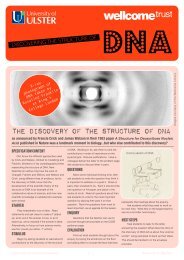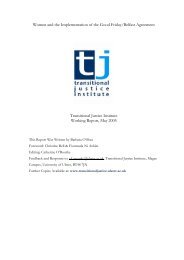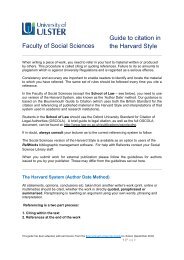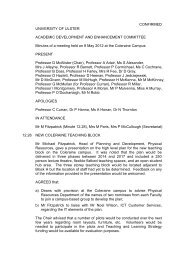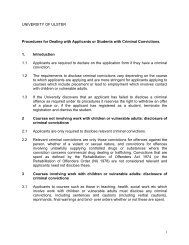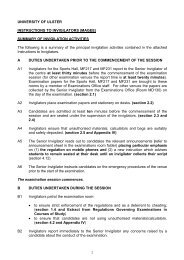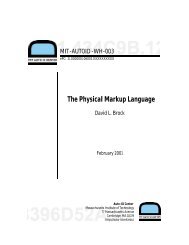From life crisis to lifelong learning: Rethinking working-class 'drop out'
From life crisis to lifelong learning: Rethinking working-class 'drop out'
From life crisis to lifelong learning: Rethinking working-class 'drop out'
You also want an ePaper? Increase the reach of your titles
YUMPU automatically turns print PDFs into web optimized ePapers that Google loves.
Reframing <strong>life</strong>long <strong>learning</strong> and student ‘drop out’<br />
Almost a third of the student drop-outs from <strong>working</strong>-<strong>class</strong> families cited<br />
difficulties in funding their studies as the decisive reason for prematurely<br />
leaving university. This proportion is only half as high in other groups.<br />
(Heublein, 2004, p. 7)<br />
Adequate funding for students from lower socio-economic groups would therefore go<br />
a long way <strong>to</strong>wards improving student retention. In addition, students who do change<br />
course or institution, or who need <strong>to</strong> work, should not be further penalised – the<br />
system should accommodate their needs. Financial support linked <strong>to</strong> academic<br />
achievement is punitive for both individuals and institutions.<br />
A consequence of a more inclusive, <strong>life</strong>long <strong>learning</strong> model of higher education<br />
would be the participation of older students, who are more likely <strong>to</strong> have family<br />
responsibilities. In Germany, <strong>working</strong>-<strong>class</strong> students tend <strong>to</strong> be older than their<br />
peers, as they have not come through the grammar school route, but through<br />
‘second-chance’ and vocational routes. Incompatibility between family commitments<br />
and course obligations contributes <strong>to</strong> the early withdrawal of these students<br />
(Heublein, 2004, p. 9). This problem could be exacerbated in the UK by a <strong>life</strong>long<br />
<strong>learning</strong> model of HE unless adequate support and understanding is available.<br />
In addition, a <strong>life</strong>long <strong>learning</strong> model of HE would need <strong>to</strong> be supported by facilities<br />
such as credit accumulation and transfer, and effective tracking <strong>to</strong> facilitate this<br />
process. Heagney notes:<br />
… although students move in and out of higher education and<br />
employment, very little tracking of these movements takes place.<br />
(Heagney, 2004, p. 11)<br />
Contributions from Australia, Ireland and Germany all noted a cultural mismatch<br />
between what is offered by higher education and the expectations of students from<br />
lower socio-economic groups – this includes pedagogies, values, knowledge<br />
systems and curricula contents. German research shows that this is particularly<br />
pronounced in subject areas:<br />
… strongly characterised by social selectivity that is medicine and law.<br />
(Heublein, 2004, p. 8)<br />
59





